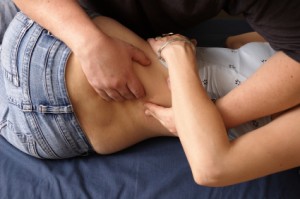Opting for physical therapy and training from occupational therapists can help an arthritis patient cope with the affliction in a better way and lead as normal and pain-free a life as possible. Arthritis is a painful and potentially crippling disease that can make your life hard. Physical therapy can help an arthritis patient learn to cope with the disease better and learn new ways of working around the difficulties caused by this condition.
Occupational and Physical Therapy Basics
What Physical Therapy Actually Is
Physical therapy for arthritis will focus on how your body functions and such therapists will prescribe exercises that will tone up and strengthen the muscles to reduce the stress and pain in your joints. They can prescribe a course of exercise to lessen the stiffness in the joints and increase mobility. They will also teach you some exercises that can help you tone up to your muscles.
What Occupational Therapy Actually Is
Occupational therapy training focuses on your interaction with your environment on a daily basis. Occupational therapists study how you perform your daily and mundane activities and show you ways to make those tasks easier on your joints. They normally suggest small modifications to aid you like using grab-bars around the toilet to help you get up, bath-stools in the shower, and shoulder straps on your bags or briefcases rather than a hand grip.
They can also suggest supplemental devices to help support your joints like hand splints. They ideally suggest devices that help make everyday tasks easier for you.
Basic Measures in Occupational and Physical Therapy

Occupational and physical therapists procedure might involve a rage of treatments, massages, exercises and external aids.
-
Massage
Ice-packs or heat-pads can be used to reduce inflammations around joints.
-
Rest
Because of the pain and stiffness in the joints, ordinary activities can be tiring and your therapist might suggest rest periods especially after more stressful activities.
-
Exercises
Exercising your joints without stressing them will prevent the loss of use of the affected parts. It will help you retain a certain amount of flexibility in them. Some strengthening exercises will help tone up your muscles to prevent wear and tear.
Exercises and diet control might be prescribed to keep the weight down. An increase in the body’s weight can put more strain on the joints and can worsen the condition.
Lifestyle Changes During Occupational and Physical Therapy
Foot care and Joint Support
Your therapist can advise you on the proper kind of footwear for you including special shoes that support the contours of your feet, like shock absorbing shoes. He might also use splints to provide support to weakened joints.
Environmental Modifications
Therapists will advise you to use certain aids like grab-bars to help you get to your feet from a sitting position. Your therapist might also suggest how you can rearrange your work and home environment to provide proper room for movement and to lessen the amount of stress placed on your joints.
Activity Modifications
Your therapist might also suggest measures to change the way you perform certain tasks to reduce the strain on your joint muscles and bones. For instance, he might suggest ways to avoid standing for long periods of time while performing certain tasks, like using a bath-stool in the shower.
He can train you on how to use alternate muscles like using your shoulders to carry weights instead of your hands, spreading the stress of certain tasks more evenly over your body instead of on just one or two parts.
Occupational and Physical Therapy Duration
The duration of the therapy depends on the severity of your condition. If the problem has just started, your recovery time might be quicker. If you have lived with arthritis for long, then you may need more time to feel better. Whatever the case might be, remember that you should not stop the exercises after you stop visiting the therapist.
You need to strictly follow the instructions of your therapist even after you feel better in order to maintain the health of your joints and muscles. The long term goal of the treatment is to prevent loss of use of the affected areas and to maintain muscle and tissue flexibility and ease of movement.
Physical therapy will help through your recovery and rehabilitation by exercising your joints and muscles to maintain their flexibility. Occupational therapy will teach you how to adapt your environment to reduce stress on your joints.
Only by opting for occupational or physical therapy methods will you be able to deal with the condition, although there’s no definite cure for the same. Just ensure that you stay in touch with your physician and therapist during the entire procedure for arthritis therapy.